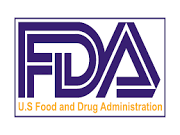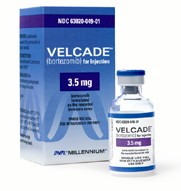
Recently Diagnosed or Relapsed? Stop Looking For a Miracle Cure, and Use Evidence-Based Therapies To Enhance Your Treatment and Prolong Your Remission
Multiple Myeloma an incurable disease, but I have spent the last 25 years in remission using a blend of conventional oncology and evidence-based nutrition, supplementation, and lifestyle therapies from peer-reviewed studies that your oncologist probably hasn't told you about.
Click the orange button to the right to learn more about what you can start doing today.
- You are here:
- Home »
- Blog »
- Multiple Myeloma »
- Elderly Multiple Myeloma Diagnosis? Fasten Your Seat Belts!
Elderly Multiple Myeloma Diagnosis? Fasten Your Seat Belts!

According to research MM patients over 70 are the majority of newly diagnosed MM patients, are a growing percentage of NDMM, are dying faster than young NDMM and are “vastly underrepresented in clinical trials.”
My approach in studying any and all therapies for elderly multiple myeloma diagnoses is if they make sense for the elderly MM patient. When I ask “does it make sense?” I am examining the newly diagnosed multiple myeloma patient (NDMM) from diagnosis to death.
Keep in mind, the danger of a multiple myeloma diagnosis to the elderly is a well worn subject. My experience and research indicates that conventional oncology is conflicted when it comes to treating MM.
The main conflict, as I see it, is that conventional oncology’s primary approach in treating MM is aggressive. In the Cure vs. Control debate, the vast majority of conventional oncologists, including the FDA, takes the cure approach, not the control approach.
Taking an aggressive approach to treating multiple myeloma is fine for someone in there 40’s, 50’s and maybe even a person in their 60’s. The problem, the conflict, is due to the fact that the average age of the NDMM patient is 69. Half of the more than 32,000 MM diagnoses in 2019 were in elderly people aka people over the age of 70. This group of people don’t handle aggressive, toxic therapy as well as younger NDMM patients do.
The issue discussed in the two blog posts linked below, is related to the cure vs. control debate as it relates to elderly NDMM patients.
In short, regardless if a NDMM patient over the age of 70 can physically manage the high-dose toxicity of an ASCT, does it make sense from a therapy plan standpoint? If conventional oncology can provide 5-10 years of both quality of life and length of life to the NDMM patient with novel chemotherapy regimens at lower doses than ASCT, why would you choose a therapy plan that offers a longer first remission (PFS) yet incurs more pain, side effects, risk of death and expense?
- The Elderly Multiple Myeloma Patient-To Treat or To ASCT?
- Multiple Myeloma Stem Cell Transplant- Safe for Elderly- But Beneficial?
Clinical Trails:
Clinical trials have inclusion and exclusion criteria. The problem is, for NDMM patients anyway, is that much of the typical exclusion criteria has to do with age.
For example, the average age of newly diagnosed MM patients is 69. If one of the “exclusion criteria” is that NDMM patients over 70 are excluded, well, the older half of all NDMM patients are automatically excluded from any/all clinical trials.
Other common exclusions are :
- decreased kidney function (common symptom of NDMM)
- decreased heart function (see the study below and the discussion of ejection fraction)
- existence of another cancer (again, we’re talking the elderly population…)
Have you been diagnosed with MM? To learn more about evidence-based, non-toxic MM therapies scroll down the page, post a question or comment and I will reply to you ASAP.
Thank you,
David Emerson
- MM Survivor
- MM Cancer Coach
- Director PeopleBeatingCancer
Recommended Reading:
- Multiple Myeloma Clinical Trial? Understand Pros and Cons
- Multiple Myeloma Chemotherapy- Arsenic trioxide/ Velcade/ Vit. C/ Dex. Intro?
- Multiple Myeloma Therapies- Why Chemotherapy May Not Work for African Americans-
Increasing the Representation of Older Adults in Blood Cancer Trials
“Blood cancers most commonly affect adults aged 65 years and older, with especially high rates among those aged 75 and above…These prevalence rates are expected to grow as the global population of older adults continues to increase. For example, the incidence of multiple myeloma is projected to increase by 77% among those older than 65 by the year 2030, compared to 57% among those in younger age groups…1
Along with elevated prevalence rates, studies have demonstrated higher mortality rates in older adults compared with younger adults with hematologic malignancies. The highest mortality rates have been noted in patients aged 75 and older, and 1 study showed that individuals in this age group comprised more than 50% of deaths resulting from…myeloma…1
Despite such figures, however, older adults are vastly underrepresented in clinical trials investigating treatments for hematologic malignancies…
[Dr Kanapuru and colleagues] outline a critical need amongst older adults with hematologic malignancies; advances in outcomes, morbidity, and mortality, cannot be improved unless older adults are enrolled in clinical trials…”“The authors depict restrictive eligibility criteria both apparent — such as age limitations — and occult that preclude enrollment for this vulnerable population,” she explained to Hematology Advisor…
Working groups convened by the FDA Office of Hematology and Oncology Products and other stakeholders recently discussed potential ways to broaden eligibility criteria to include a larger number of older adults in clinical trials investigating hematological malignancies.
Their recommendations include:
- allowing enrollment of certain patients with creatinine clearance values 30 or less and those with mild or moderate hepatic dysfunction or cardiovascular dysfunction.1
- “Additionally, dose modification guidance for patients that permit safe administration of these drugs in these patients should also be considered.”1
- The authors suggest that while exclusion may be appropriate for patients with an ejection fraction of less than 35% for safety reasons, individuals should not be excluded based solely on ejection fraction, and
- some patients with prior or concurrent malignancies should be considered for inclusion if currently stable or treated successfully at least 2 years ago.
Multiple Myeloma Diagnosis- Treatment Plan? ASCT? Non-conventional?
Longer Progression-Free Survival (not Overall Survival) was seen with multiple myeloma patients who were transplanted in first remission.
Dear David -I sincerely hope you are as well as can be. I was received a multiple myeloma diagnosis exactly 2 years today with stage 1. I’m trying to figure out my therapy plan. I’m wondering about everything from ASCT to Antineoplaston therapy (ANP).
Last April, 4/19, I began to deteriorate:
- white blood cells were low-1.20,
- hemoglobin below 90.
- kidney began to show signs of deterioration.
- fractured ribs and backbone.
I have not been told what stage I now am. My hips are just about bearing me up.
I was given Velcade (bortezomib) but I had an extremely bad reaction. I am about to start lenalidomide (revlimid). (I believe I’m stage 3). I do get shortness of breath but not in any pain. Want to try something new before it’s too late.
Please let me know if treatment at the Burzynki Clinic (antineoplaston therapy) is affordable for the average person.
Also, do you believe one has to have a stem cell transplant to have any chance of survival.
Your help and advice would be most appreciated. Katherine
Dear Katherine-
I am sorry to read of your multiple myeloma diagnosis and symptoms.
Regarding your question about auto stem cell transplantation, depending on the MM patient’s stage, no, I don’t believe that MM patients must have an ASCT in order to have any chance at survival. Study after study shows that ASCT does NOT lead to longer overall survival (OS is length of life). Novel therapies, in various combinations, prove just as long an average MM survival aka OS.
Studies like the one linked below, are difficult for the newly diagnosed MM patient to understand because MM patients who are “ASCT eligible” are, on average, younger and are in better health. Despite this, those who do have an ASCT at first remission after a multiple myeloma diagnosis, suffer higher treatment related risk as well as a higher risk of short, long-term and late stage side effects.
I do believe, however, that MM patients must combine both conventional and evidence-based non-conventional MM therapies to achieve the longest, best overall survival.
Which leads me to reply to your question about the BRI and ANP.
I’m not sure what you consider “affordable to the average person” but I will say that
- ANP is not usually covered by health insurance and
- ANP is expensive.
These complications comes with issues like two different forms of ANP- capsules and intravenous. Capsules are much less expensive than intravenous. Further, regardless of what form of ANP you choose, you will know after 1-3 months if your MM is responding. Your problem will be if your MM responds (like mine did) you will be obligated to spend more.
Keep in mind that there are a host of complementary and integrative MM therapies that oncology does not offer.
Recommended Reading:
- Multiple Myeloma Chemotherapy – Antioxidants Enhance Action
- Multiple Myeloma Side Effects- Stem Cell Transplant & Heart Failure-
- Autologous Stem Cell Transplantation for Multiple Myeloma- Overall Survival vs. PFS
Autologous stem cell transplantation in first remission is associated with better progression-free survival in multiple myeloma.
“At a median follow up of 54 months, mean overall survival (OS) and progression-free survival (PFS) group were 128.3 months (95% C.I. 111.9-144.7 months) and 73.8 months (95% C.I. 57.7-89.9 months), respectively.
On univariate analysis, OS was adversely affected by renal insufficiency (p = 0.024), while OS was better with CR/VGPR post-ASCT (p < 0.001) and lenalidomide maintenance therapy (p = 0.009). PFS was affected by CR/VGPR pre-ASCT (p = 0.021), CR/VGPR post-ASCT (p < 0.001), and transplant in first remission (p = 0.034)…
Transplant-related mortality was 2.1%… Transplant in first remission versus beyond first remission showed a trend for better PFS (p = 0.073)…
Longer Progression-Free Survival (not Overall Survival) was seen with patients who were transplanted in first remission.



